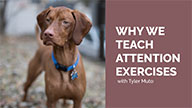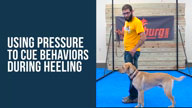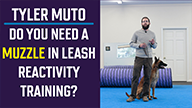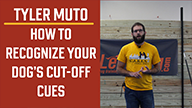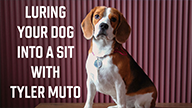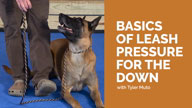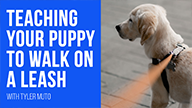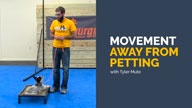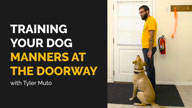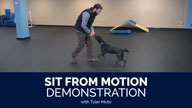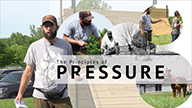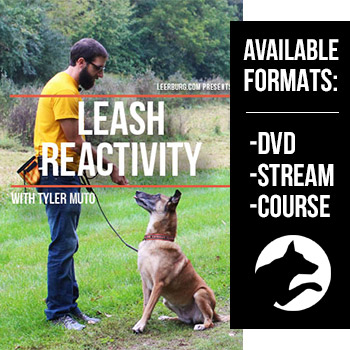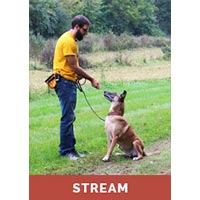Related Videos
Loading
Key Elements of Good Doorway Practice with Tyler Muto
Uploaded on October 25, 2019 •
6 min
Key Points:
- - Make sure your dog is not crowding your space.
- - They should be slightly behind you and in a sit.
- - If your dog is in a very intense state of mind, wait until they settle. The dog's state of mind is one of the most important factors in this exercise.
- - Once your dog is sitting, make sure the leash is loose. Remember restraining is not training. By ensuring your dog is staying in a sit with a loose leash, you are helping develop better self-discipline, Which is another one of our important character traits.
- - Open the door at least a few inches without moving your feet. The dog must stay in a sit. The idea is to test the dog, to ensure they are waiting to follow your lead, not trying to bolt through the door the moment it opens.
- - If when you open the door opens the dog gets up from their sit, say "nope" while adding upward leash pressure, and hold upward leash pressure until they return to a sit position, then make sure the leash is loose again.
- - Use the "loop" around technique if your dog starts crowding your space. Don't try to pull them backwards.
- - Once you have ensured that sure that your dog is patiently waiting with the door open, you may move forward. As you move forward your dog is allowed to follow you, but they must stay calm and polite in heel position.
- - If when you move forward, your dog tries to bolt through the door, give a correction then come back inside, reset your dog, and start all over.
Take all the time you need with this exercise now. By putting in the time in the beginning you will save yourself a lot of time in the long run. If you've bend your rules now, your dog will learn to always test you and it will take a lot of work every time you try to go through a door. The goal is that the dog learns to get it right the first time every time. That only happens through our consistency.

